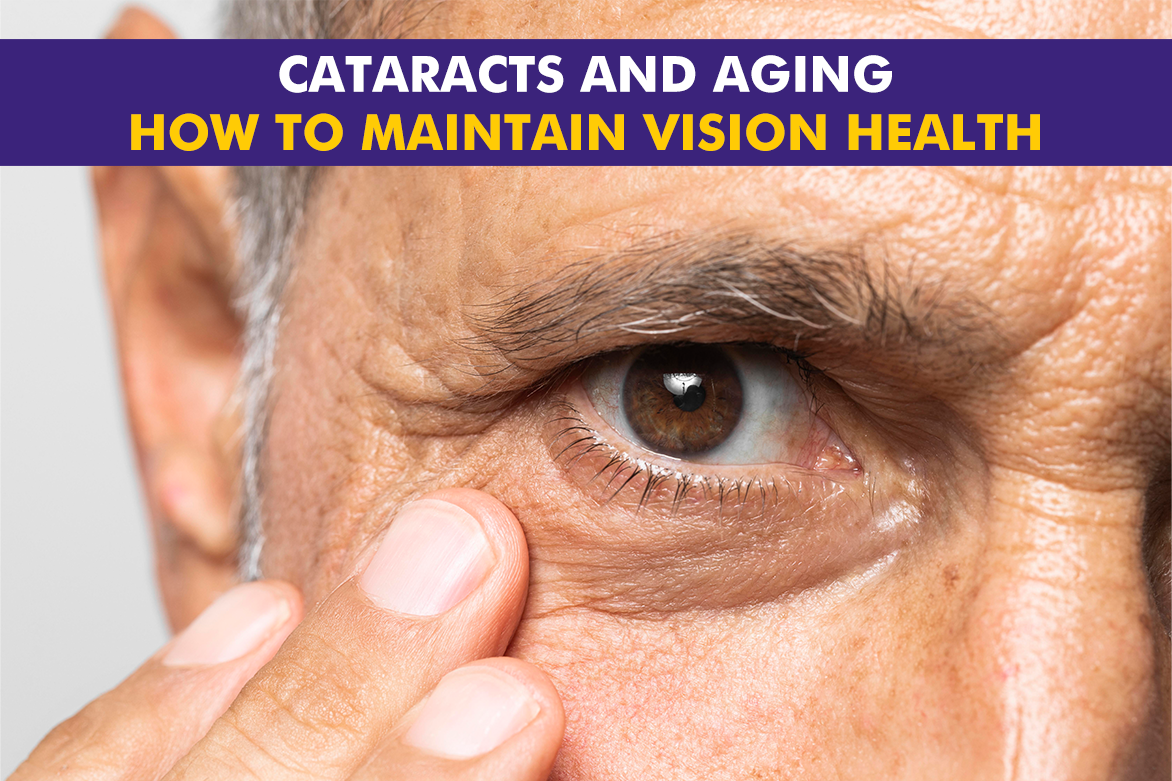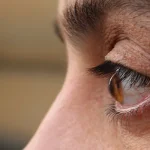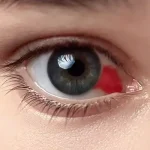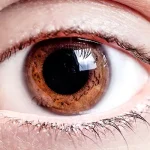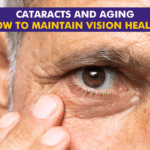Table of Contents
- Understanding Cataracts: What Are They and How Do They Develop?
- How and Why Do Cataracts Form?
- Why Aging Affects Your Eyesight
- Common Symptoms and Early Warning Signs of Cataracts
- Preventative Measures: How to Protect Your Vision as You Age
- Benefits of Early Detection and Eye Exams
- Treatment Options and Advances in Cataract Surgery
- Living with Cataracts: Tips for Maintaining Quality of Life
- Conclusion
Aging is a journey that shapes every aspect of our lives, including our eyesight. Vision changes are among the most noticeable and impactful experiences for adults as they get older. One of the leading culprits behind declining vision in people above 50 years or above is cataract development or cataract formation—a condition that millions of people encounter. Maintaining good vision health isn’t just about reading a book or enjoying beautiful landscapes; it’s about preserving independence, safety, and quality of life.
This blog is your comprehensive guide to cataracts and aging eyes risks—from how cataracts develop to practical strategies for protecting your eyes, recognizing warning signs, and navigating modern treatments with confidence.
Understanding Cataracts: What Are They and How Do They Develop?
Cataracts are the most common cause of treatable blindness worldwide, responsible for more vision impairment than any other eye condition. Imagine a camera lens that gradually becomes smudged and cloudy—the images it produces will be blurred and discolored. The same process happens within your eye’s lens as proteins break down and clump together over time.
How and Why Do Cataracts Form?
- Age-Related Changes: The lens loses water and elasticity, thickens, and proteins start to aggregate, creating cloudiness.
- Oxidative Stress: Exposure to sunlight, smoking, and poor nutrition causes oxidative damage, accelerating the process.
- Medical Factors: Diabetes, prolonged steroid medication use, certain eye injuries, and previous eye surgeries hasten cataract formation.
- Congenital cataracts: Rare, but some babies are born with them due to genetics or prenatal factors.
Fact Check
- According to the World Health Organization, cataracts cause 51% of global blindness.
- More than 65% of people over 60 have some degree of cataract development.
Why Aging Affects Your Eyesight
Your eyes are among the sensitive organs in your body, constantly adapting to lighting conditions, distance, and focus. As we age, several factors combine to weaken the eye’s ability like:
- Lens Rigidity: The natural lens stiffens, making it harder to focus on close-up objects—a condition called presbyopia.
- Reduced Tear Production: Tear glands produce fewer and poorer-quality tears, leading to dry eye syndrome and eye irritation.
- Diminished Pupil Size: Pupils react more slowly to light changes, making night driving and glare more challenging.
- Retinal Changes: The retina and macula can begin to lose cells, putting you at risk for macular degeneration.
Pupil shrinks and reacts slower
Adjusting to bright sunlight or glare
Retinal sensitivity drops
Pupil shrinks and reacts slower, Adjusting to bright sunlight or glare
| Age-Related Eye Changes | Impact on Vision and Daily Life |
| Lens becomes cloudy and stiff | Difficulty reading, driving at night |
| Tear production decreases | Dryness, redness, and irritation |
| Retinal sensitivity drops | Faded or less vibrant color perception |
Common Symptoms and Early Warning Signs of Cataracts
Detecting cataracts at the earliest stage leads to the simplest and most effective management. Many vision changes are subtle at first, so knowing what to look out for can make all the difference.
Early Symptoms:
- Vision that is slightly blurred or hazy, like looking through a frosty window
- Increasing difficulty seeing at night or with low light
- Sensitivity to light, glare, or halos around lights, especially when driving at night
- Colors appearing less vibrant or yellowing over time
- Frequent changes in your eyeglass or contact lens prescription
- Difficulty reading small print or recognizing faces from a distance
Struggling to thread a needle, see the television subtitles, or read menus in dim restaurants? Don’t dismiss it as “just old age”—these are classic early clues of cataract progression. Contact our ophthalmologist professional if you notice any of these symptoms; regular eye check-ups can help confirm the diagnosis.
Preventative Measures: How to Protect Your Vision as You Age
Good vision in old age doesn’t just happen—you have to work for it like you would your heart or bones. The best protection? A blend of healthy habits, environmental awareness, and regular professional monitoring, like
-
-
- Wear sunglasses with UV protection: Damaging rays accelerate lens and retina aging.
- Eat a nutrient-rich diet: Prioritize leafy greens, citrus fruits, carrots, nuts, and oily fish. Omega-3s and antioxidants are proven eye protectors.
- Quit smoking: Tobacco causes free radical damage to eye tissues.
- Manage chronic illnesses: Keep diabetes, hypertension, and cholesterol strictly under control.
- Exercise: Regular exercise increases blood flow, nourishing the retina and optic nerve.
- Hydrate: Drink ample water to prevent dry eyes.
- Practice digital hygiene: Take breaks (the “20-20-20 rule”) to relax your eyes during screen time.
- Limit alcohol: Excessive drinking worsens nutritional absorption needed for eye repair.
- Schedule annual eye exams: Especially important after age 50.
-
None of the above-mentioned tips ensures cataract prevention; they can only boost or improve eye health.
Benefits of Early Detection and Eye Exams
Routine eye exams are a proven investment in your well-being. Many dangerous eye diseases are “silent”—they progress slowly and painlessly. Early detection means treatment—or sometimes just simple monitoring—can avoid serious consequences.
Why Eye Exams Matter:
- Detect cataracts, glaucoma, macular degeneration, and even high blood pressure or diabetes, sometimes before you have symptoms.
- Allow for modern, less invasive treatments before problems escalate.
- Empower you with knowledge: understanding risks, protective steps, and early warning signs unique to you.
Anytime symptoms arise
All ages
| Frequency of Eye Exams | Recommended For | Reason |
| Every 2 years | Ages 40-54 | Detect subtle changes early |
| Annually | 55 and older | Cataracts and AMD progress fast |
| Anytime symptoms arise | All ages | Prompt diagnosis and care |
Treatment Options and Advances in Cataract Surgery
Cataracts are highly treatable in the modern era—surgery is now faster, safer, and more effective than ever before.
How Is Cataract Surgery Performed?
- A tiny incision is made in the eye, the cloudy lens is dissolved with ultrasound (phacoemulsification) or a specialized laser, and an artificial intraocular lens (IOL) is inserted.
- The procedure is usually outpatient, uses local anesthesia, and takes about 15–20 minutes per eye.
Advances and Customizations:
-
- Laser-Assisted Surgery: Adds even more accuracy, uses computer mapping for best visual results.
- Premium Intraocular Lenses: Multifocal, toric, and accommodating lenses can reduce or eliminate the need for glasses after surgery.
- Faster Recovery: Most people resume light daily activities within a day or two.
| Cataract Surgery Technique | Incision Size | Recovery Time | Benefits |
| Traditional (phaco) | 2.8–3.2 mm | 1–2 weeks | Predictable, widely used |
| Micro-incision/MICS | 1.8–2 mm | 2–7 days | Faster healing, less trauma |
| Femtosecond laser (FLACS) | <2 mm | 1–3 days | Laser precision, less swelling |
Living with Cataracts: Tips for Maintaining Quality of Life
If your doctor recommends monitoring your cataract rather than immediate surgery, there are many ways to adapt and stay positive, like:
- Brighter lighting makes details stand out—use adjustable lamps for reading.
- Reduce glare with anti-reflective or polarized glasses.
- Use magnifying glasses to help with sewing, puzzles, or reading labels.
- Organize your home: keep frequently used items in the same spot, add high-contrast labels.
- Don’t stop activities you love—enlist help, use large-print books, or seek out vision-friendly apps and audio resources.
You must:
-
- Schedule regular eye checks
- Stay active and socially connected
- Discuss all medication side effects with your doctor
- Watch for sudden vision changes or pain
Conclusion
Taking charge of your vision health as you age is a rewarding investment in joy, independence, and life itself. Cataracts are a normal part of aging, but blindness doesn’t have to be. Stay proactive—learn the signs, embrace healthy vision habits.
Schedule an eye exam regularly, ask questions, and cherish the visual moments that make life vibrant.
